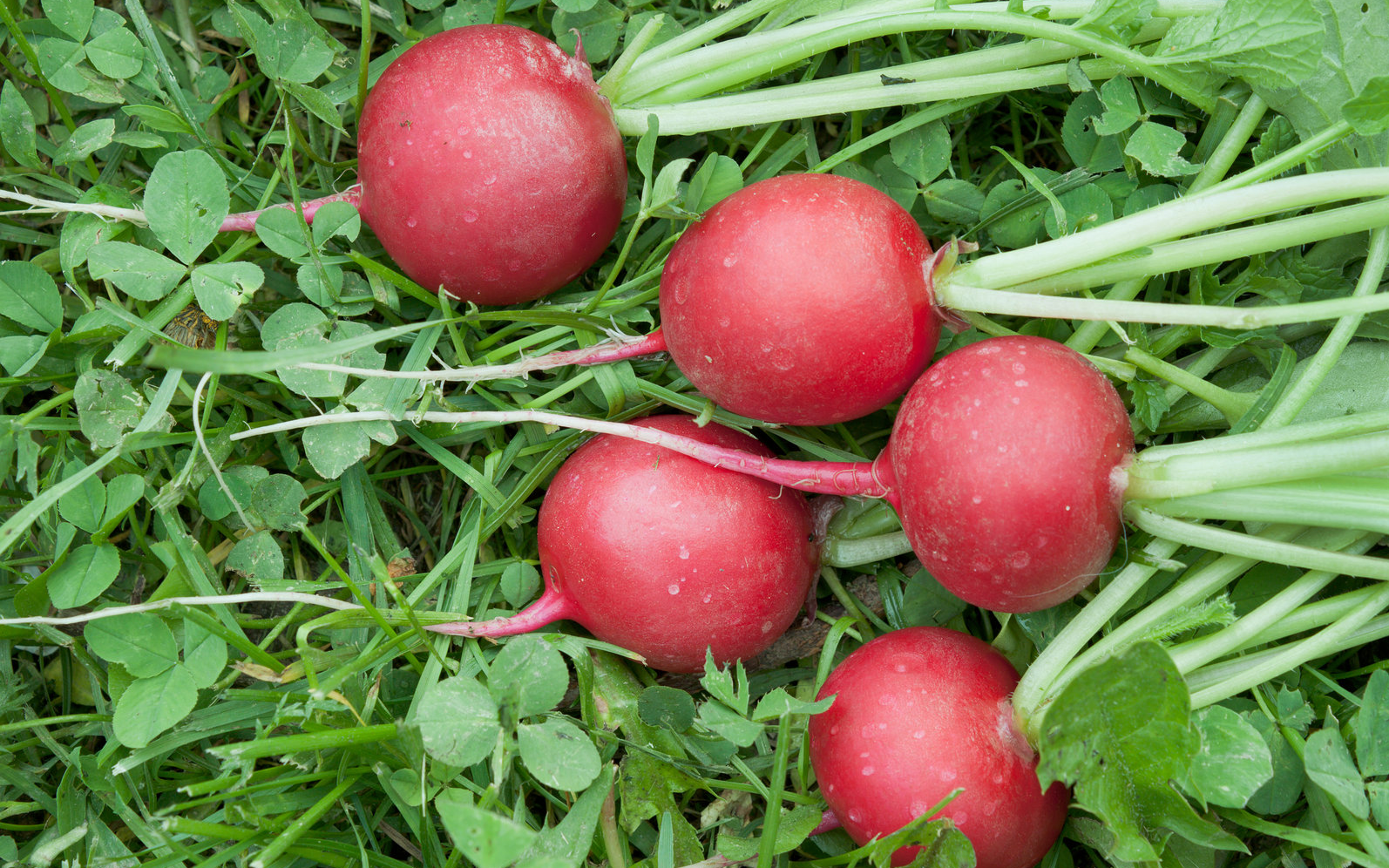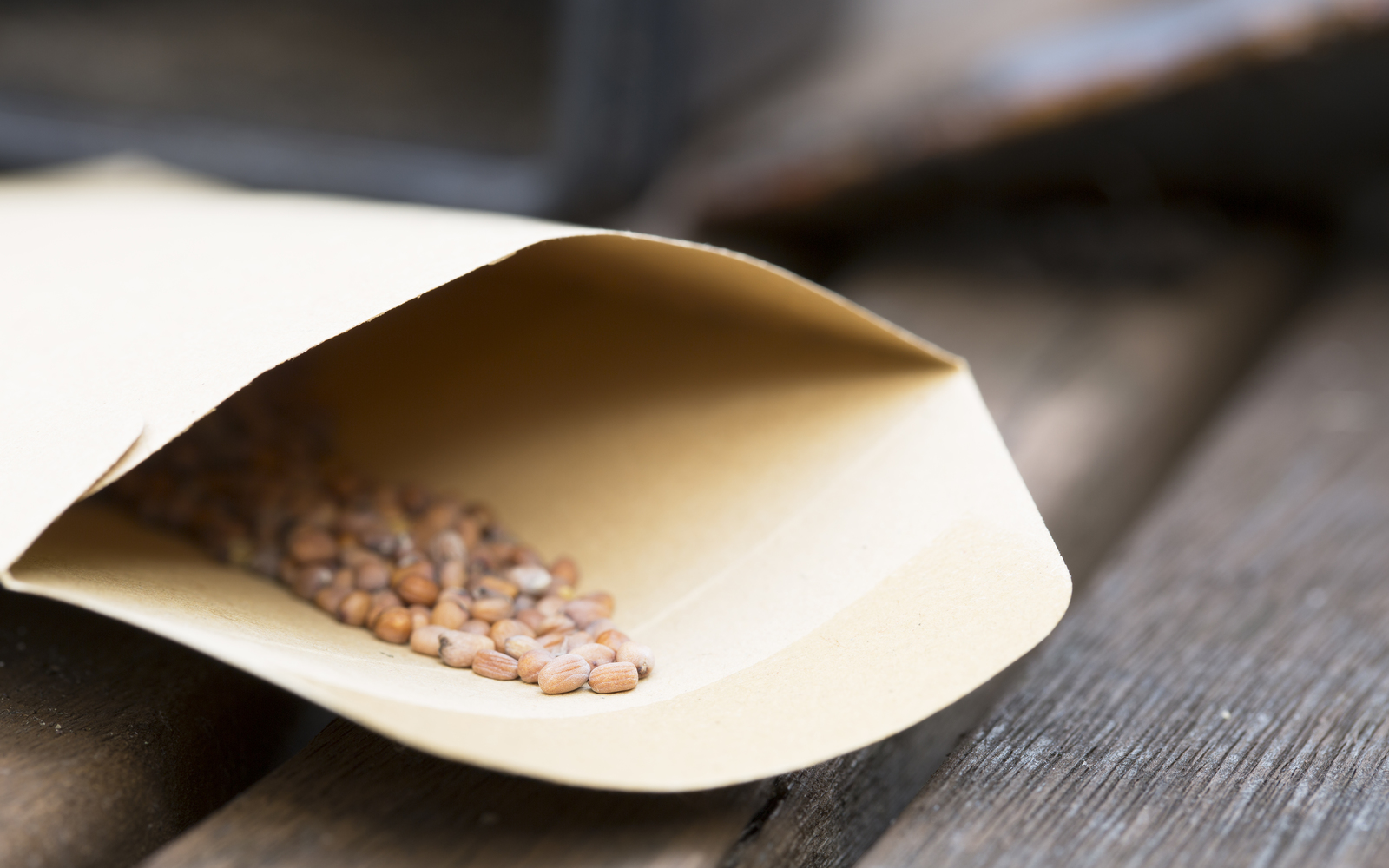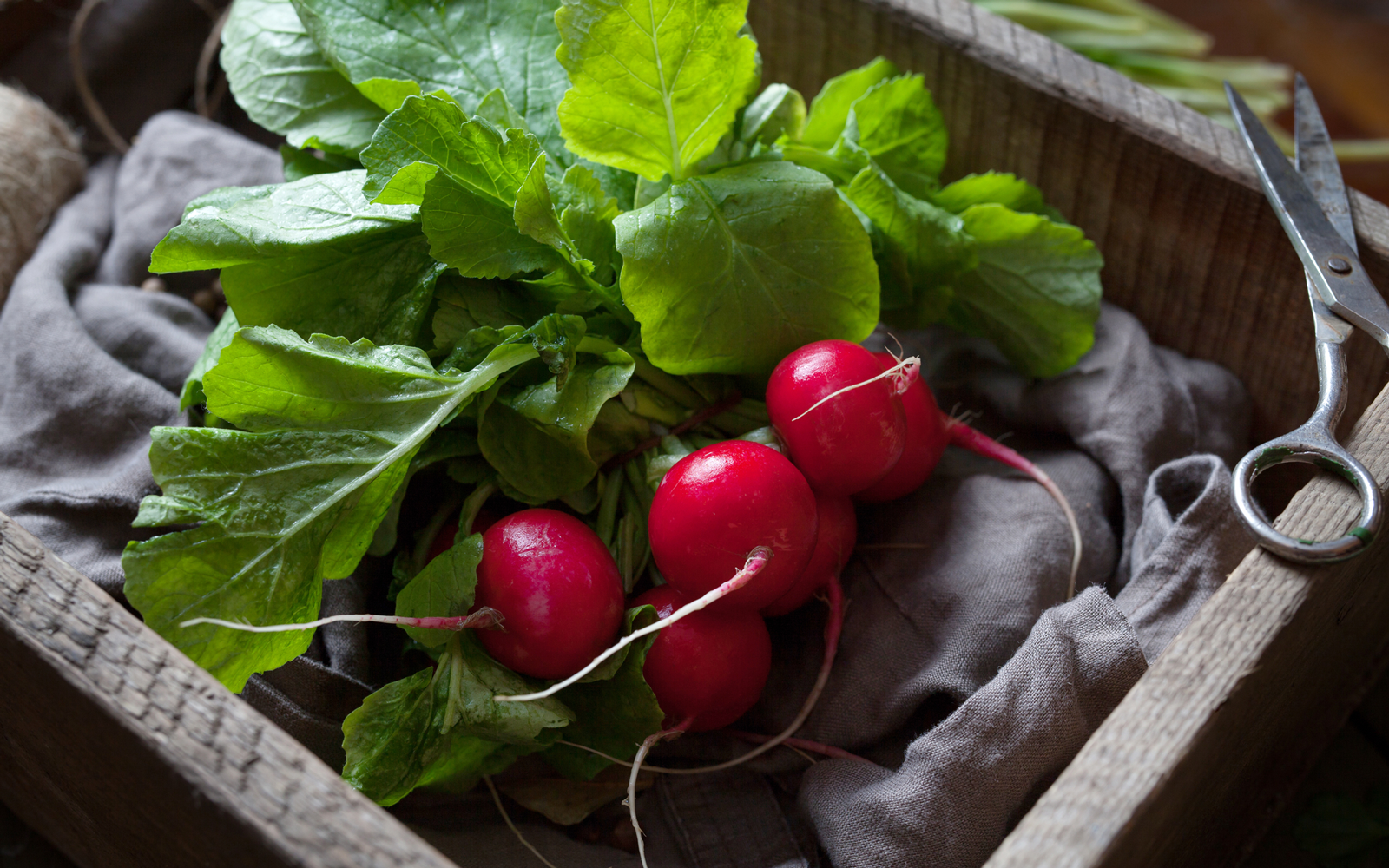Hydroponic radishes: The Secret to Growing the Best radishes Indoors

This post follows our research editorial guidelines.

When I first started growing hydroponically, I really thought my produce options would be limited to greens, herbs and a few water-loving veggies like tomatoes. That’s just not the case!

Over the years I’ve experimented with growing cauliflower, strawberries and yes even root vegetables like radishes. I’d be lying if I said it was always an easy vegetable to grow, but with the right seeds and enough perseverance you too can quickly grow your own little hydroponic radishes at home.
Stick with me, and we’ll delve into the secret sauce of growing the best radishes indoors, using hydroponics. Ready to elevate your indoor gardening game? Let’s get to it!
What’s Covered in This Guide:
Can Radishes Be Grown Hydroponically?
Yes, radishes can absolutely be grown hydroponically. While not all root vegetables can be grown in a hydroponic system, radishes have a large bulbous root that will grow well above the growing medium. Some studies suggest that growing radishes in water like this can increase the presence of harmful bacteria so avoid growing radish sprouts in hydroponics. [1]
Is it Difficult to Grow Hydroponic Radishes?
“Hydroponic growing, in general, accelerates growth rates and allows for year-round cultivation, making it an ideal method for radishes.”
Dr. Howard Resh
Growing hydroponic radishes is not inherently difficult, especially if you have some basic knowledge of hydroponic systems.
Quick Facts About Growing Radishes Hydroponically:
| Growing component | Needs |
| Germination | 4-10 days |
| Seedling Stage | 3-7 days |
| Harvesting | 30-45 days |
| Nutrients Needed | Nitrogen-rich fertilizer |
| Lighting | 6hrs/day |
| Temperature | 72°-76°F |
| pH Range | 5.5-6.5 |
| EC Levels | 1.5-2.5 |
| Growing Medium | Clay Pebbles, Wood fiber |
| Air Circulation | Necessary |
| Disease and Pest Management | Throughout growth |
Best Radishes Varieties For Hydroponics
When it comes to hydroponic gardening, not all radishes are created equal. Some varieties just seem to thrive in a soilless environment. After a lot of trial and error (and yes, a few radish fails), I’ve found that the following types are your best bet for hydroponic success:
Cherry Belle
Cherry Belle radishes are the classic red globes that most people picture when they think of radishes. They’re known for their crisp texture and mild flavor.
Easter Egg
Easter Egg radishes offer a mix of white, pink, and purple radishes in a single harvest. They’re not just eye candy; they’re also deliciously crisp and slightly peppery.
French Breakfast
French Breakfast radishes are elongated and have a unique, mild flavor with a hint of sweetness. They’re a gourmet favorite, often featured in high-end salads.
How to Grow Hydroponic Radishes
Alright, now that we’ve covered the best radish varieties for hydroponic growing, let’s get down to the nitty-gritty of actually growing them. Trust me, it’s easier than you think! Here’s a step-by-step guide to help you grow hydroponic radishes like a pro.

1. Germinating Radishes Seeds
First things first, you’ll need to germinate your radish seeds. The ideal temperature for this is between 65-75°F. If you’re like me and you’re impatient to see those little sprouts, a seedling heat mat can be a game-changer, especially in colder months.
2. Light
Once your seeds are germinated, they’ll need plenty of light—14-16 hours per day, to be exact. I’ve had great success with LED grow lights. They’re energy-efficient and provide the full spectrum of light that plants crave.
3. Growing medium
Next, you’ll need a soilless growing medium. Coconut coir and perlite are both excellent choices. Personally, I’m a wood fiber fan; it has great water retention and aeration properties.
4. Water Ph and EC
Water quality is crucial in hydroponics, If your water has a pH that is too acidic or too alkaline then nutrients will be out of reach. I made this mistake when I first got started since my tap water had a pH of 8. After a few weeks, all the plants in my system began getting sick and wilting away.
Invest in a liquid-based pH test kit and a buffer that will make your water more acidic. I also keep a buffer handy that will raise my pH but have never needed to use it. Aim for a pH level between 5.5 and 6.5 and an Electrical Conductivity (EC) of 1.8-2.2. Trust me, your radishes will thank you for the balanced environment. [2]
5. Nutrients
For nutrients, go for a balanced solution designed for leafy greens or root vegetables. Always follow the manufacturer’s instructions; it’s easy to get carried away with nutrients, but less is often more. Depending on the salt content of the solution you may need to increase the amount of water changes. The solution I use suggests that I change my water every 2 weeks but since I have a larger hydroponic kit I bump this up to every 3-4 weeks. [3]

6. Spacing
When it comes to spacing, less is more. Space your radish plants about 2-3 inches apart. This gives each plant enough room to grow without competing for nutrients.
7. Support
While radishes are generally sturdy plants, some hydroponic systems may require additional support like trellises.
8. Pests
Ah, pests—the uninvited guests of the gardening world. Keep an eye out for aphids and spider mites. Organic insecticides or natural predators like ladybugs can be effective solutions.
9. Disease
Last but not least, be vigilant for signs of disease like root rot or leaf spots. Good hygiene and proper air circulation can go a long way in preventing these issues.
Best Types of Hydroponic Systems to Grow Radishes In
Growing radishes hydroponically offers you a variety of system options. Here are some of the best ones to consider:
Deep Water Culture (DWC)
Deep Water Culture (DWC) submerges radish roots in a nutrient-rich water solution, promoting fast growth and flavorful produce. It’s one of my favorite ways to grow hydroponically since most plants can adapt to this envoroment. It’s ideal for quick-growing, small radishes like Cherry Belle.
Nutrient Film Technique (NFT)
Nutrient Film Technique (NFT) uses a shallow, sloping channel to flow nutrients over roots. It’s generally better for leafy greens but can work for radishes if managed carefully. Make sure roots have room to expand.
Drip System
The Drip System offers precise control over nutrient delivery through tubing. It’s great for radish varieties that require a longer growing period, as you can adjust nutrient levels easily.
FAQs
How long does it take to grow radishes hydroponically?
Hydroponically grown radishes typically take 22-30 days to reach maturity, depending on the variety. The controlled environment often leads to faster growth compared to soil-based cultivation.
What Are the Signs of Healthy Hydroponic Radishes?
Healthy hydroponic radishes have vibrant green leaves and firm, colorful roots. Any wilting or discoloration could indicate nutrient imbalances or disease.
Can you grow radishes in AeroGarden?
Yes, you can grow radishes in an AeroGarden, but there will be some adjustments. AeroGardens are generally designed for herbs and small leafy greens, which means space is limited. Radishes are root vegetables that require room for their bulbs to expand.
Final Thoughts
Growing radishes hydroponically is a game-changer for indoor gardeners. From selecting the right varieties like Cherry Belle, Easter Egg, and French Breakfast, to following a detailed 9-step guide, you’re well on your way to crunchy, delicious radishes. It’s sustainable, efficient, and downright rewarding.
References:
[1] Bar-Tal, A. (2023). Hydroponic Agriculture and Microbial Safety of Vegetables: Promises, Challenges, and Solutions. Horticulturae, 9(1), 51. MDPI. Retrieved from https://www.mdpi.com/2311-7524/9/1/51
[2] Singh, H., & Dunn, B. (2017, April). Electrical Conductivity and pH Guide for Hydroponics. Oklahoma State University Extension. Retrieved from https://extension.okstate.edu/fact-sheets/electrical-conductivity-and-ph-guide-for-hydroponics.html
[3] Sánchez, E., Ford, T., & Di Gioia, F. (2023, May 1). Hydroponics Systems and Principles Of Plant Nutrition: Essential Nutrients, Function, Deficiency, and Excess. Penn State Extension. Retrieved from https://extension.psu.edu/hydroponics-systems-and-principles-of-plant-nutrition-essential-nutrients-function-deficiency-and-excess

Before you go!
Hydroponic Nutrient Solution: A Complete Guide for Beginner Hydroponics
How to Set Up a Nutrient Film Technique (NFT) Hydroponic System?
How To Grow AeroGarden Peppers
How to Grow Hydroponic Vegetables and Herbs Using vermiculite